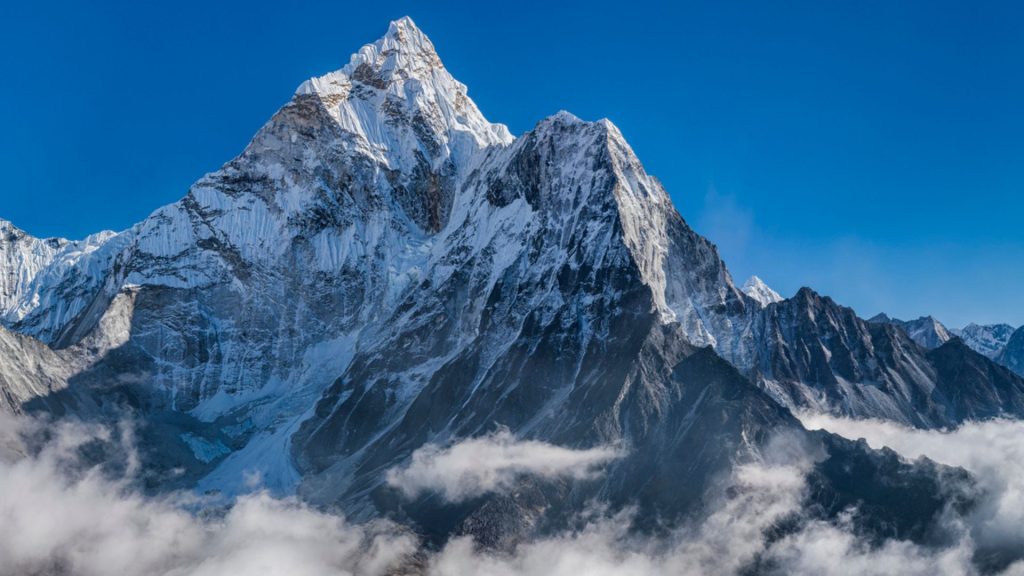Scientists uncover massive hydrogen reserves buried under mountains – Interesting Engineering

The Pyrenees, Alps, and parts of the Himalayas may be hydrogen hotspots.a day agoa day ago2 days ago2 days ago2 days ago2 days ago2 days ago2 days ago3 days ago3 days agoan hour ago2 hours ago2 hours ago2 hours ago5 hours ago5 hours ago5 hours ago7 hours ago8 hours ago9 hours agoMrigakshi DixitThe Pyrenees, Alps, and parts of the Himalayas may be hydrogen hotspots.iStock
Hydrogen is a promising clean fuel, but its synthetic production depends on fossil fuels. A new study says that mountain ranges could hold vast reserves of natural hydrogen. Scientists at the GFZ Helmholtz Centre for Geosciences have discovered that hydrogen can be created through natural geological processes.Plate tectonic modeling helped the team pinpoint potential hydrogen hotspots in mountain ranges.The modeling suggests areas within mountain ranges where deep mantle rocks are close to the surface are promising locations for natural hydrogen production.The Pyrenees, Alps, and parts of the Himalayas may be hydrogen hotspots.“This new research advances our understanding of suitable environments for natural hydrogen generation,” said Sascha Brune, head of the Geodynamic Modelling Section at GFZ. Mountain ranges could support the large-scale natural creation of hydrogen as well as the formation of underground hydrogen reservoirs that can be tapped through drilling.The study states that hydrogen can be generated in large amounts through serpentinization, a process where mantle rocks react with water, creating new minerals and hydrogen gas. This occurs when mantle rocks, normally deep underground, are brought near the surface (exhumed) through tectonic activity over millions of years.Mantle rock exhumation occurs mainly in two tectonic settings: rifting (continental break-up, like the Atlantic) and mountain building (continental collision, like the Pyrenees and Alps).Moreover, the modeling revealed that serpentinization is much more efficient in mountain ranges compared to rift basins. Simply put, mountain ranges can produce up to 20 times more hydrogen annually than rift environments.It is because mountains offer a superior combination of optimal temperatures, abundant water, and suitable reservoir rocks, making them much more efficient at producing and storing natural hydrogen. Interestingly, the study says that mountain ranges offer suitable reservoir rocks (like sandstone) for hydrogen accumulation, which could be drilled. This research strongly encourages increased exploration of natural hydrogen in mountain ranges. Exploration efforts are already underway in regions like the Pyrenees, Alps, and Balkans, where early signs of natural hydrogen have been found.“Crucial to the success of these efforts will be the development of novel concepts and exploration strategies. Of particular importance is how the formation of economic natural H2 accumulations is controlled by the tectonic history of a given exploration site,” Frank Zwaan, lead author of the study. Hydrogen has long been considered a promising green fuel due to its clean-burning nature, producing only water as a byproduct.This makes it particularly attractive for energy-intensive industries like aviation and steel-making. However, its current production methods largely negate these advantages. Production processes like steam methane reforming release high amounts of carbon dioxide, a greenhouse gas, into the atmosphere. Now that we know white hydrogen can be generated, the crucial next step is to find where it pools in substantial, drillable reservoirs.“Overall, we may be at a turning point for natural H2 exploration. As such, we could be witnessing the birth of a new natural hydrogen industry,” Zwaan concluded in the press release. The findings were published in the journal Science Advances. Mrigakshi Dixit Mrigakshi is a science journalist who enjoys writing about space exploration, biology, and technological innovations. Her work has been featured in well-known publications including Nature India, Supercluster, The Weather Channel and Astronomy magazine. If you have pitches in mind, please do not hesitate to email her.Stay up-to-date on engineering, tech, space, and science news with The Blueprint.By clicking sign up, you confirm that you accept this site’s Terms of Use and Privacy Policya day agoa day agoa day agoa day agoPremiumIE PROFollow
Source: https://interestingengineering.com/energy/mountains-secret-vault-endless-energy






